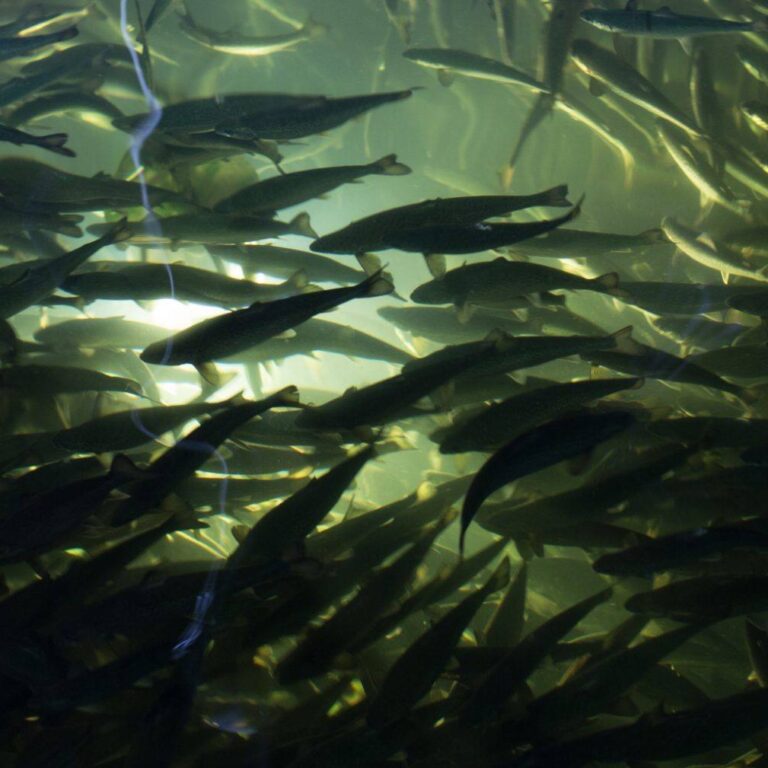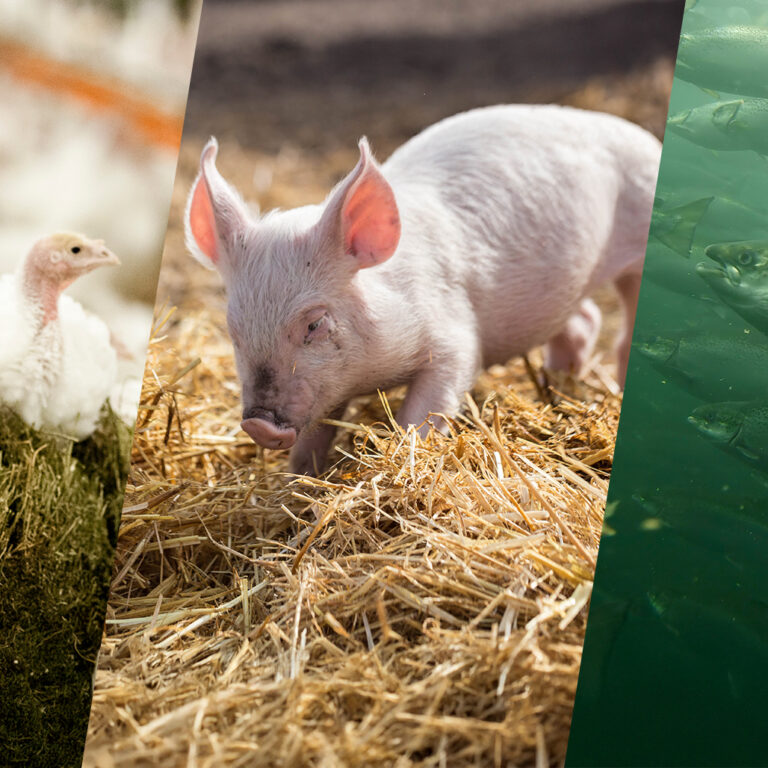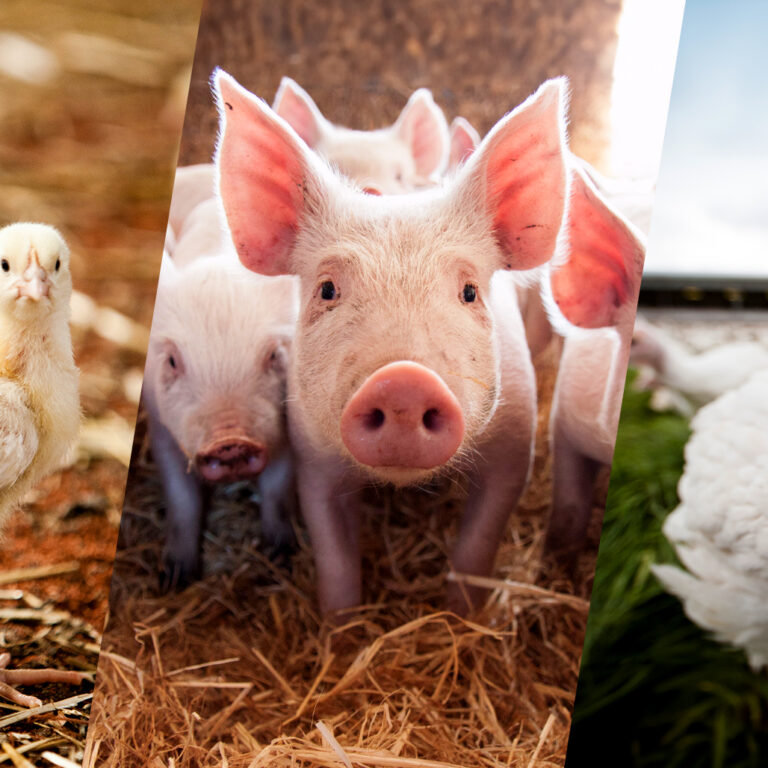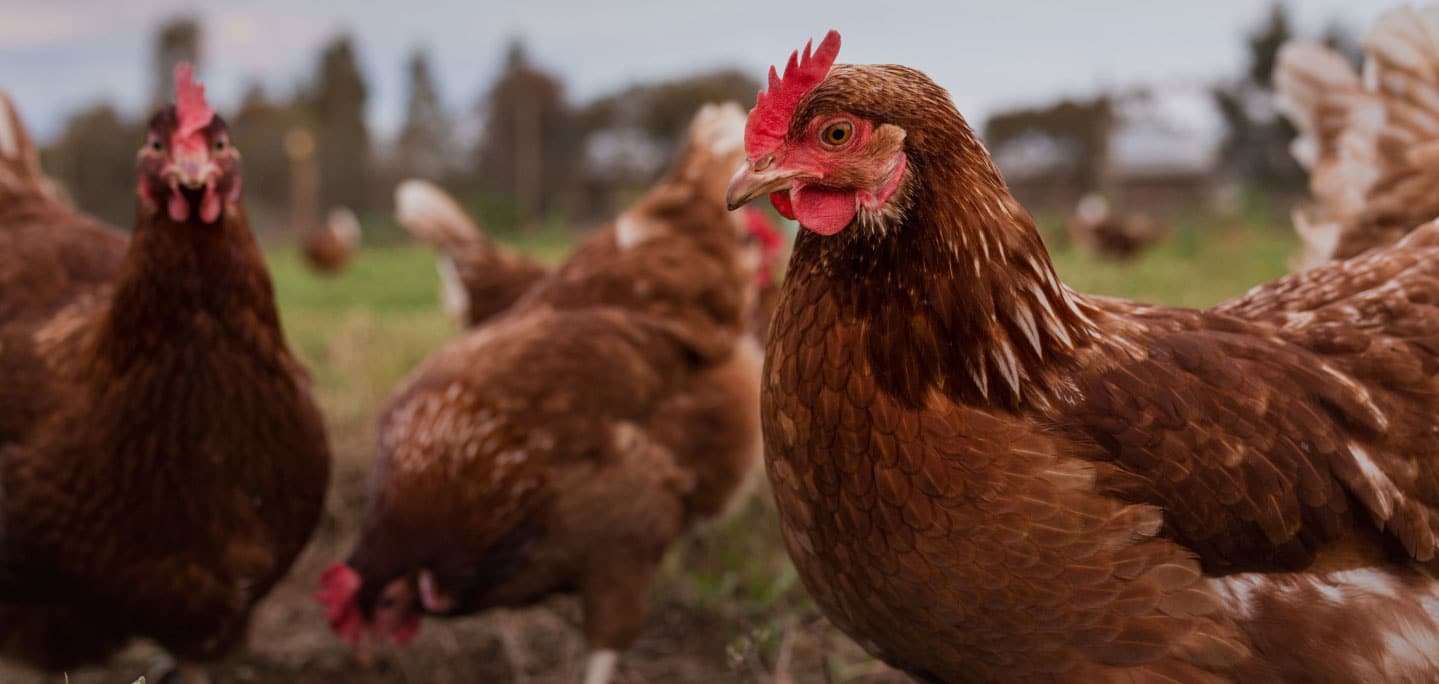Salmon have been swimming their way into our lives, but how much do you know about these beautiful fish? Previously on this blog, we’ve shared with you why fish welfare is important.
Now, we want to tell you more about what makes salmon unique, and how we work to encourage their natural behaviours when they are farmed to RSPCA Standards.
Salmon have complex social lives
Salmon school together in the wild, although their schools are larger and more loosely defined than other fish species who school in tighter formations. They develop hierarchies within their schools based on individual fitness, and also based on their individual backgrounds – salmon from the same original rivers will tend to stay together, especially during the period of time when they migrate to their home rivers to spawn.
Being carnivores, it’s likely that their social interactions is based more around competition for food than around play-based behaviours.
For salmon, there’s no place like home
In the wild, Salmon migrate annually to areas with greater food resources, and to spawn. It isn’t scientifically known how salmon know to migrate, and it’s considered likely that it’s a natural impulse that may be genetically driven.
Interestingly, salmon tend to return to their home river (where they were born) to spawn, although some stick to their school instead, which helps to increase genetic diversity.
Salmon will swim against the current of the river when spawning, in order to maintain their position in the water column, and to avoid getting swept away in the current. They have sensory cells along their lateral lines that help them detect currents. This switches when they undergo ‘smolting’ – they then swim with the current and make their way back out to sea.
Smoltification – a little known fact about salmon
Salmon spawn in rivers, so young salmon hatch from eggs and live for approximately a year in freshwater, before they travel out to the ocean. In order to make this transition, salmon undergo a significant change to their physiology, which is called ‘smolting’.
When they ‘smolt’, salmon experience huge hormonal changes, their gills change, and their colour changes from dark green/brown with spots (ideal for camouflaging in a river environment) to silver counter-shading, which helps them hide from predators at sea.
When adult salmon migrate back to freshwater rivers to spawn, they undergo smolting again in reverse, including flashes of brighter colour being added to their colouring, to help attract a mate.
RSPCA Approved Standards for farmed Atlantic salmon focus on giving salmon a better a life
So what about farmed salmon? Good welfare for farmed Atlantic salmon should focus on a well-managed environment that also caters for their behavioural needs. Salmon farmed to RSPCA Approved Farming Scheme Standards have a lower stocking density than conventional farms, allowing the fish to exhibit normal swimming and schooling behaviour. Stockpersons are trained and competent at handling salmon with as low stress as possible, and all husbandry practices on farm are undertaken with the objective of limiting negative impacts of the fish.
You can find out more about the RSPCA’s Approved Farming Scheme Standards for farmed Atlantic salmon here.
Find out more answers to questions about how the RSPCA Approved Farming Scheme is improving the lives of farmed salmon.
Want more? Huon Aquaculture: Six months on from winning farmer of the year or Huon Aquaculture: Putting animal welfare first







1 Comments
One response to “You’ve been schooled – everything you need to know about salmon!”
[…] like salmon and tuna are well-known for their migrations. Salmon travel from the ocean to freshwater rivers to spawn, while tuna follow marine species migration routes in […]